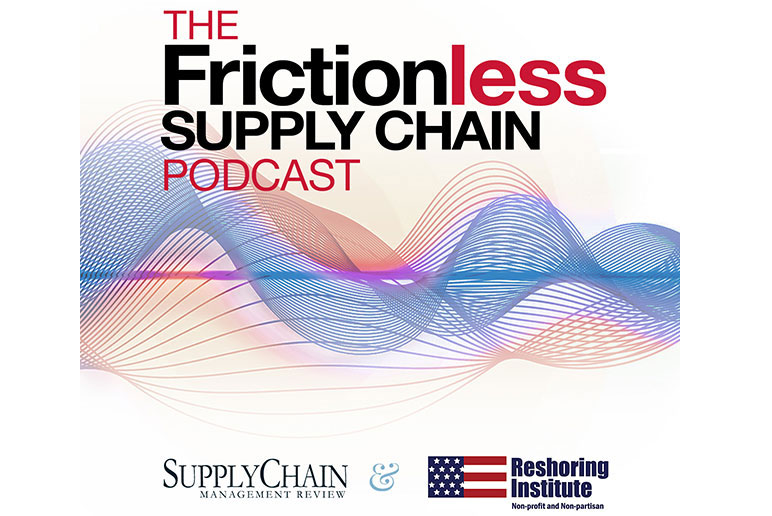Let’s be honest: materials handling, logistics and the broader world of supply chain management has not always been the career of choice for the cool kids. And yet, attracting the energy, ideas and talent of the best and brightest millennials is key to our industry’s future. In fact, at Gartner’s supply chain conference last May, Linda Topping, Colgate Palmolive’s chief procurement officer, described how her company is rethinking its culture to attract the best and brightest to Colgate.
There’s evidence that the cool factor is starting to change. Last year, the Wall Street Journal dubbed supply chain management “the hot new MBA.” When I look at the attendees at ProMat, Modex or conferences like the Materials Handling & Logistics Conference I attended earlier this week in Park City, I still see a lot of faces like mine – showing my age after more than 30 years in the workforce. But, I’m also seeing more faces like Meredith Marsico, 31, Lauren Spirnak, 29, and August Drake, 25. All three are hard-working, enthusiastic engineers who are building careers in warehousing, distribution and logistics at GENCO. I had a chance to chat with them the other day at MH&LC about their journeys to the industry. The reasons they became engineers in the first place, and why the love their jobs, offer some lessons for anyone thinking about attracting new talent to our industry.
Reach them young: Everyone knows that math is a prerequisite to engineering. So, it comes as no surprise that all three were good at math and the sciences in high school. More importantly, all three chose engineering over medicine, research or finance because they knew engineers. It seemed real. Drake had friends who majored in engineering. Spirnak had relatives who were engineers and she talked to them about the field before going off to college. Marsico’s father is a civil engineer who ran his own firm. She recalled going into the office and helping her dad on projects. “The big thing that attracted me to engineering was problem solving,” she said. “I like to have answers and in engineering, there’s a problem and a solution.” By the way, problem solving was one of the key attractions to Drake and Spirnak. My takeaway is that it’s vital for our industry to reach out to high schools on career day to talk about engineering and materials handling.
Enthusiasm counts: Warehousing and distribution were the second jobs out of college for both Spirnak, whose first job was working in manufacturing for ConAgra, and Marsico, who earned an MBA and then did consulting on process improvement for three years. Drake, on the other hand, came to the industry via a summer internship with GENCO. She had offers from firms in manufacturing and medicine but turned them down. “The interviewer from GENCO was the most passionate,” she told me. At the end of the summer, she was offered a part-time job while she was still in school, which turned into a full-time job after graduation. The enthusiasm rubbed off. “Because we’re a 3PL, my job is a little bit different every week,” she said. “It’s been an amazing experience.”
Engagement counts: I asked each what they liked about warehouses and DC’s. Maybe they thought lift trucks were cool? All three said they loved the ability to work on an entire process and not just a product; the creative aspect of designing a solution; and the gratification that comes from seeing designs become a reality. Spirnak, for instance, was part of a team that developed an app that allows supervisors who were stuck in their offices to get vital, real-time reporting on their iPhones on the floor. “Key information shows up on their phones in a colorful, graphical format in real time versus what you would see in a line by line report on a computer,” she explained. “It makes it much easier for supervisors to identify problem areas and has helped with labor balancing and getting product out on time. Additionally, the app can be accessed anywhere in the building, allowing supervisors to spend more time on the floor.
The toughest part of the job – and maybe the biggest challenge to an industry trying to attract young people who dream of working for Facebook or Google – is explaining what they do to friends and family. One of Drake’s friends has dubbed her an interior decorator for warehouses – think of it as an industrial Project Runway. “First, I have to explain what GENCO does,” says Marsico. “First, I tell them that we run large distribution centers for companies. Then I tell them to imagine a large food company: They make the things we eat, but they look to us to provide a warehousing solution that increases productivity.”
What would they tell the next batch of engineers about to enter the market about materials handling? “It’s the variability of the work and the tangibility of the results,” Spirnak said. “It’s different every day and you can see the benefits of what you do.”
If you think about it, that’s pretty cool!
SC
MR

Latest Supply Chain News
- Unlocking retention: The role employee engagement plays
- Can supply chain managers embrace an entrepreneurial mindset?
- Challenges to ESG reporting
- With capacity to spare, logistics real estate demand remains subdued
- Tariffs, taxes and trade: The impact of Trump’s reelection on the supply chain
- More News
Latest Resources

 Explore
Explore
Latest Supply Chain News
- Unlocking retention: The role employee engagement plays
- Can supply chain managers embrace an entrepreneurial mindset?
- Challenges to ESG reporting
- With capacity to spare, logistics real estate demand remains subdued
- Tariffs, taxes and trade: The impact of Trump’s reelection on the supply chain
- How to improve demand forecasts for new product families
- More latest news
Latest Resources

Subscribe

Supply Chain Management Review delivers the best industry content.

Editors’ Picks




